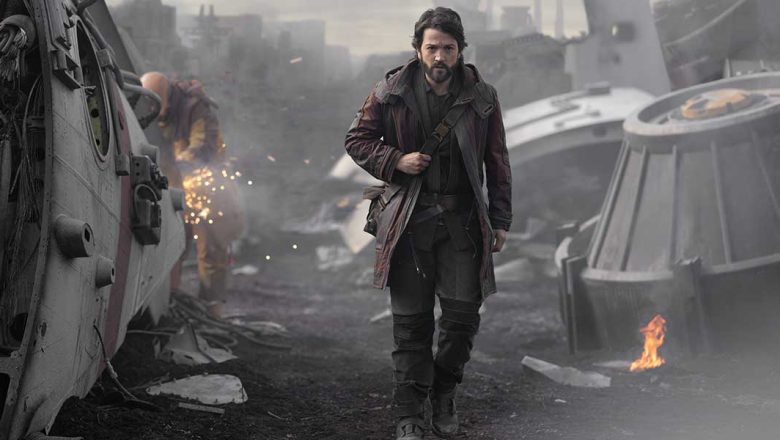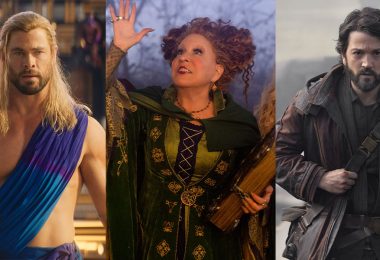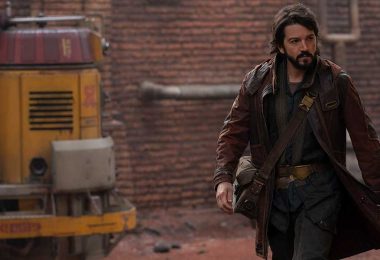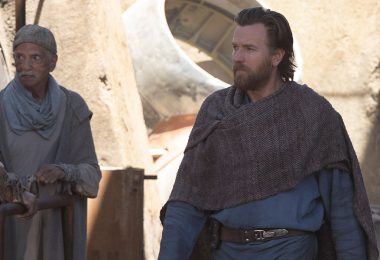By Jocelyn Buhlman
The fate of the galaxy hangs in the balance. The once-mighty force of the Jedi has fallen and a mysterious, powerful Emperor holds the planets in the palms of his gnarled hands. It’s a grim time for the average person trying to navigate life in the Star Wars galaxy, where Episode III ended and when the Andor series is set—with the “bad guys” winning…
When you start watching Andor on September 21 on Disney+, you’d expect the tone to be hopeless—but then, you’ve forgotten what keeps the heart of Star Wars beating. “There’s nothing cynical about this show,” showrunner Tony Gilroy maintains during the show’s recent virtual press conference. The sentiment was shared with the present cast, including Diego Luna, who plays the titular character; Genevieve O’Reilly, who plays Mon Mothma; Adria Arjona, who portrays Bix Caleen; Denise Gough, who plays Dedra Meero; and Kyle Soler, who plays Syril Karn. While details around this show have been kept as top-secret as the Death Star plans or the location of the secret Rebel Base, Gilroy and the cast passed along some key pieces of intel about the series, which sets the stage of a rebellion strong enough to end a Sith-ruled Empire.
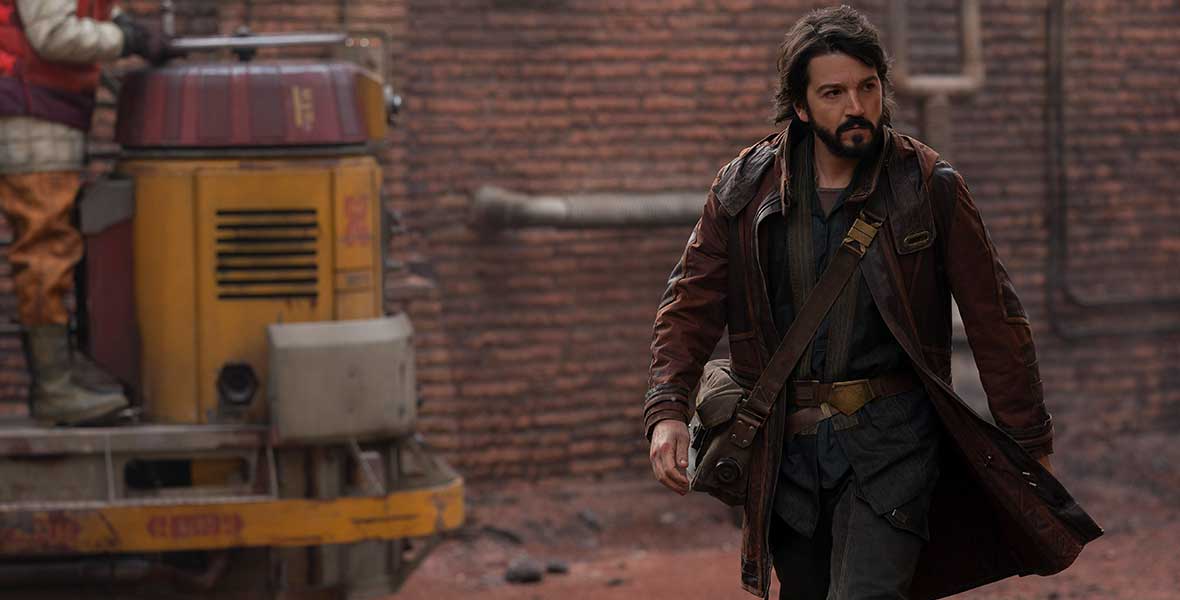
Andor is the story of how a revolutionary is created
Something both Gilroy and Luna agree on is that while Rogue One: A Star Wars Story was about a key moment in the Rebel Alliance’s history, Andor is a map—laying out the steps of how someone can transform from an average person to a rebel, willing to risk it all in the name of hope. To Gilroy, the “walk-in” for the series was that exact idea: “We can do a story that takes [Cassian Andor] literally from his childhood origins and walk him through a five-year history of an odyssey that takes him to that place, during a revolution, during a moment in history in a place where huge events are happening, and real people are being crushed by it. The fact that we could follow somebody as an example of a revolution all the way through to the end [made it work].”
While this story is set in a galaxy far, far away, the journey of Cassian is one with roots very much here on Earth. “It’s quite relevant today,” Luna says, “to tell the story of what needs to happen for a revolutionary to emerge, to exist, to come to life.” The original Star Wars trilogy shows us a Rebellion at the height of the battle, fully organized and prepared to take down the Empire. Those who watched Star Wars with wide eyes, filled with the hope that they too could make a difference in the world might still be wondering: What’s the first step? It’s not often that an astromech droid rolls into your life with a message from a princess—most journeys to making a difference start a little differently. “That journey matters to me,” Luna says, “You know that [Cassian] started to fight when he was six years old. What does that mean, exactly? Why would a six-year-old miss his childhood and start to fight? I think that story matters.”
He continues, “If that’s possible, then anyone can do something. I always thought of Cassian as a character that has been forced to move; therefore, he brings a pain that he’s carrying, that is making him very cynical about life. [But he’s] finding a way to get the clarity of someone that suddenly starts believing, and that goes through a process of acknowledging that something in a community can give you enough strength to be useful and to bring change.”
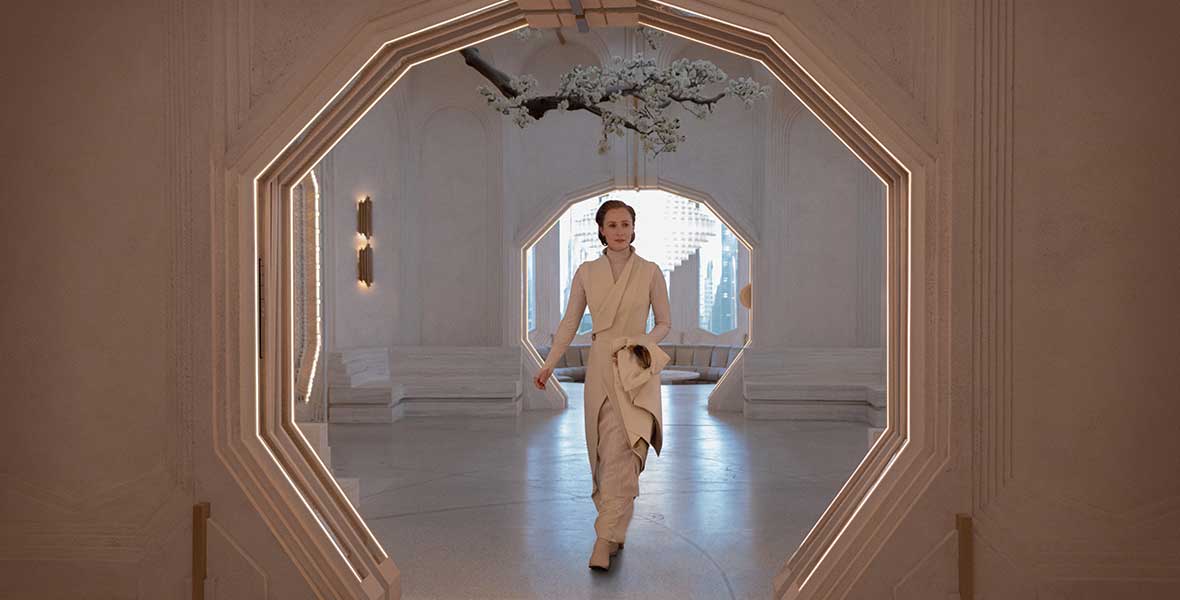
You’re going to meet the real Mon Mothma
While much of the series is about Cassian’s journey to the Rebel Alliance, it also spends a lot of time exploring different characters who are moving other parts in this story—including a familiar face for many. O’Reilly reprises her role as Mon Mothma, which she previously played in both Star Wars: Revenge of the Sith and Rogue One. “Each time we’ve met her, we’ve met this kind of composed, regal, dignified woman,” O’Reilly says, “who often—like with Cassian in Rogue One—sends people out on a mission.” It’s true—this Rebel Alliance leader’s most famous scenes in Rogue One and in Star Wars: The Return of the Jedi (as portrayed by Caroline Blakiston) are both centered around sending the main characters on assignments.
So, what does Mon Mothma do when she’s not telling us about complex plans and the Bothans who died to get them? “For the first time, we get to see the woman behind the role,” O’Reilly tells us, “We get to see a private face of Mon Mothma. We get to flesh out not just the senator, not just the would-be leader of a Rebel Alliance, but also the woman.” The series starts with Mon Mothma “steeped in Empire,” as O’Reilly puts it, “navigating a very male-dominated Empire with a very powerful Emperor Palpatine at the top of it. And so, we find her in a place we’ve never seen her before. We find her in a bit of a gilded cage. What I’m excited for is for us to travel that story with her.”
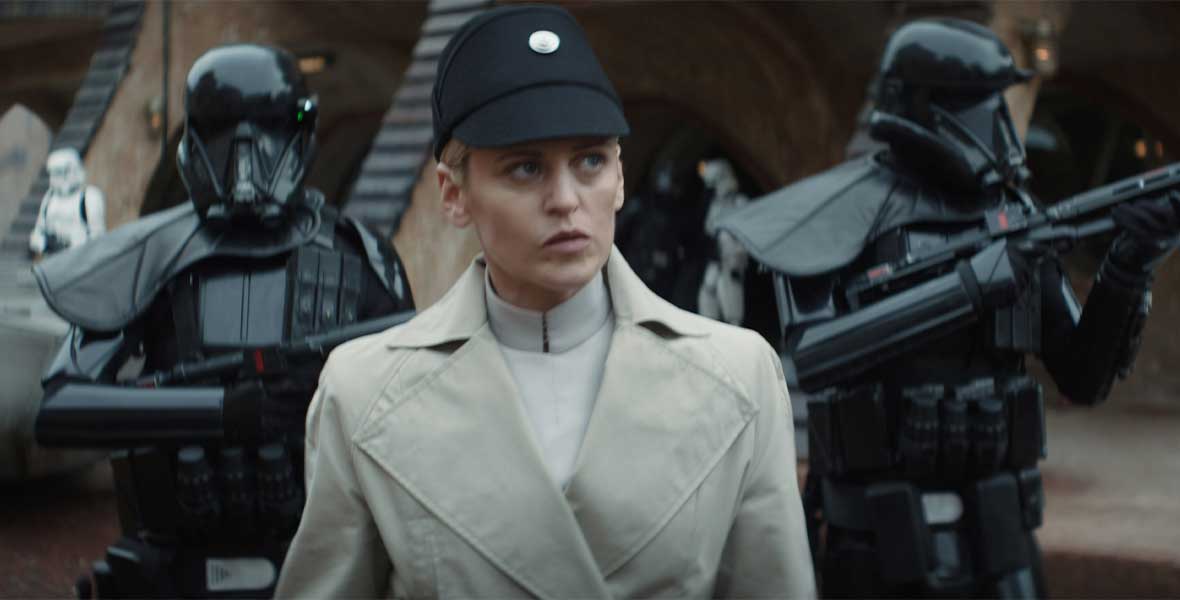
There will be…Girl Power?
Both O’Reilly’s Mon Mothma and Arjona’s Bix Caleen are heroines of the series, but Gough’s character, Dedra, is a powerful woman with a different alignment. “Dedra is an ISP officer. And when we meet her, she’s at the kind of low end of the ladder,” Gough says. “She’s incredibly ambitious and meticulous. What I love about playing her is that, she’s in this very male-dominated world and she’s seeing, around her, the way that people are missing what she can see is happening.”
Much like Mon Mothma, she’s steeped in the male-dominated empire. The difference is that she wants to be there: “She’s clawing her way up the ladder. And I love portraying the effect that power just has on a person, like the danger of that pursuit of power and control, regardless of gender.” Gough amends—”I mean, I do kind of love that you’re thinking, ‘Oh, go girl.’ And then you remember, she’s in a fascist organization.” She laughs, adding, “I’m getting a real thrill being able to play her. She wants to really make her mark in this industry of the Empire.”
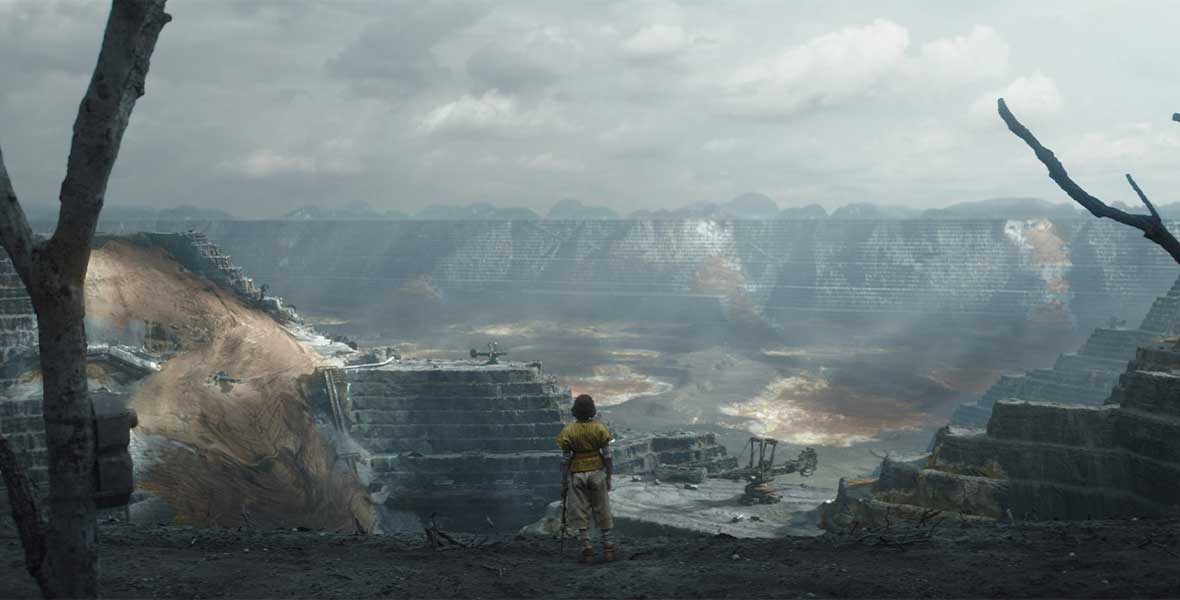
They created a fully immersive world
If you’re going to tell a story about intergalactic espionage and revolutions, it helps to have an out-of-this-world set to explore. “I remember coming to one of the sets, the town that had been built by the production designers, and the set units and every little thing had been thought of. Every cabinet had, I don’t know, a whole life inside,” recalls Soler.
Airona agrees: “I remember the first day, walking around and kind of getting lost in it and exploring. And it was so cool.” A specific memory stands out to her that really illustrates the sheer size of the whole thing; as she explains, “There was one day where one of our directors told me to run, and I was like, ‘Well, where do you want me to run?’
He’s like, ‘Anywhere you want!’ ‘Cause everything was filmable. If I would go left, we could’ve filmed there; if I would go right, we could’ve filmed there. He could basically point the camera either left or right, and that was kind of cool.”
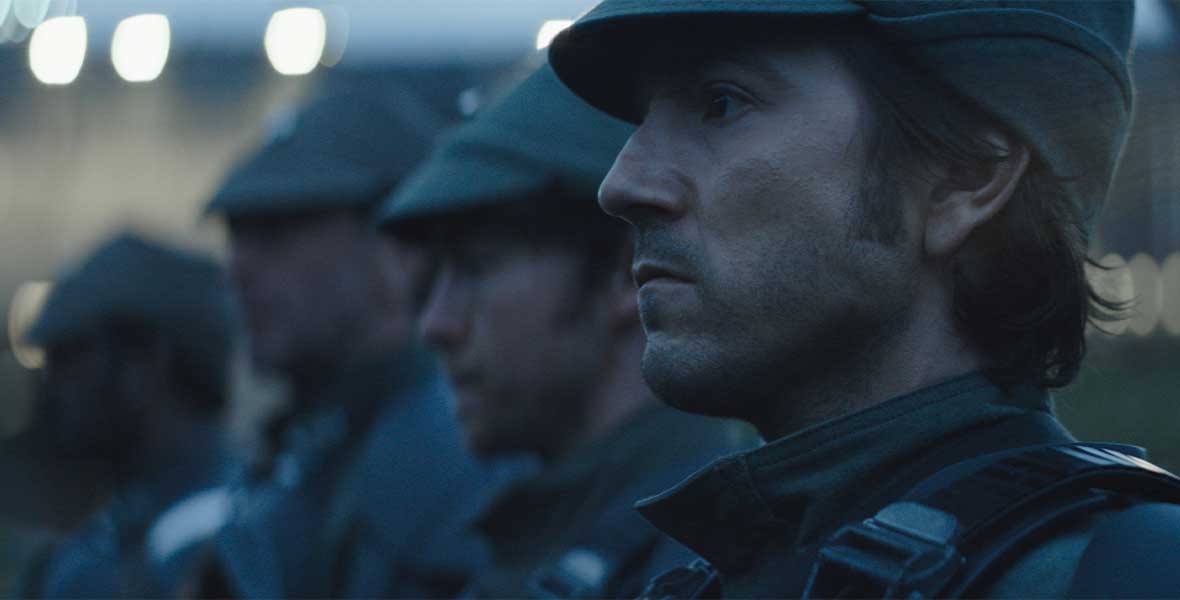
Andor explores the “gray areas” of Star Wars
Throughout Star Wars’ stories, audiences are left to contemplate good and evil; the light and the dark. Even in films like Rogue One, where there are no Jedi or Force users among the protagonists, there is still a steadfast belief in the light side of the Force. But what about that in-between area, that’s not quite light and not quite dark? “[Cassian] spends much of his time in the complexity of the gray areas,” Luna explains, “In the contradictions of characters. And that’s where I think this real thing comes out of it. Because it’s full of that experience, of just being someone trying to live your life and having to make choices. This is a show about people, about real people, you know? It’s very dark times in the galaxy; there are no Jedi around. These people are having to articulate a reaction to oppression, and it’s the most grounded kind of Star Wars you’ll get.”
In many ways, it’s a story about us here on Earth. We don’t have Jedi or Sith or any kind of Force to propel us, so how do we rebel? As Luna says, “It is a show about us—it is a show about these people finding the strength to come up with a reaction and to change and bring change to their reality.” It’s a story he hopes everyone will want to see: “I thought that story matters too much. It’s [something] I would like to tell my kids, and to my friends.”



